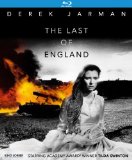| Reviews & Columns |
|
Reviews DVD TV on DVD Blu-ray 4K UHD International DVDs In Theaters Reviews by Studio Video Games Features Collector Series DVDs Easter Egg Database Interviews DVD Talk Radio Feature Articles Columns Anime Talk DVD Savant Horror DVDs The M.O.D. Squad Art House HD Talk Silent DVD
|
DVD Talk Forum |
|
|
| Resources |
|
DVD Price Search Customer Service #'s RCE Info Links |
|
Columns
|
|
|
Last of England, The
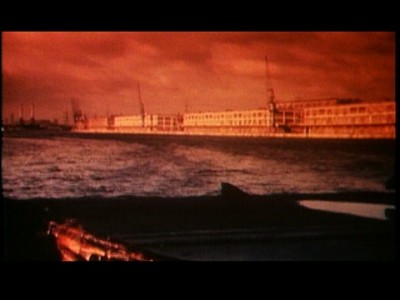
A band of ski-masked figures holding machine guns puts handsome young men up against a wall for execution; elsewhere, in some sort of hellish, bonfire-lit twilight, some of the same gunmen stand guard over a group of the huddled masses on a grimy pier somewhere along the Thames against a backdrop of an apocalyptically bombed-out-looking London in the distance. A happy, free young woman (Tilda Swinton, whose memorable but very brief appearance it's probably somewhat misleading to call "starring," as this Blu-ray's front cover copy understandably does) remembers flowers and springtime as she prepares for her wedding, then slashes more and more desperately with a knife and even tears with her teeth at a binding gown she can't seem to get out of. A modern-day, leather-jacketed Pan plays his flute amid the ruins of a demolished public-works site; a satyr-like, androgynously attired and made-up male ballerina dances an orgiastic dance of destruction and rebirth in some spark-lit netherworld. The nation is in rubble; squatters shoot up in abandoned, decayed public housing (which stretches for mile after boarded-up, fenced-off mile) whilst angry young men bash futilely away in rage and lamentation at the crumbled remains of a formerly glorious infrastructure. This is Derek Jarman's (Jubilee, Blue) infernal vision of his nation in The Last of England, a film in which the political and the personal fuse in one perpetually oncoming rush of enraged, outrageous satire and despondent mourning.
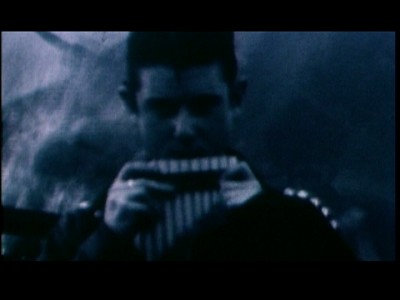
There is no recognizable story in Jarman's film, which plays out much more like a poem (not just in its imagery, but in its entire structure and reason for being) than anything else; there are no characters, only emblematic figures. The first thing we see (only briefly, before the deluge of sounds and images begins) is Jarman, shot in relatively straightforward black-and-white, at his desk, scribbling away late at night before his window, which looks out upon a circa-1987, economically stratified, ice-cold in every way London. Actor Nigel Terry (Excalibur) is the narrator, quoting (as a clue to the film's nature/intentions and as very apt commentary) lines from T.S. Eliot and Allen Ginsberg. The images that follow are strange in and of themselves, clearly allegorical but never baldly or simplistically symbolic; "evocative" is probably an overused word (by this reviewer, for one), but there's no other word as apt for The Last of England; the multiple possible meanings of what Jarman shows us bloom like flowers behind our retinas. Their strangeness is then taken even further, maximized by Jarman's peculiar filming and editing technique of sheer overload, monochrome jarring up against oversaturation, brilliant bits of brightly-colored home movies from England's '50s socialist paradise juxtaposed with the scorched earth (mostly shown in browns and muted oranges) that now exists where those idyllic, secure families once did. The variable (but always deployed in guerrilla style) film stocks distinguish each strata of this cosmology (it all appears to be 16 and/or 8 mm); film speed, never at "normal" frames per second, has been messed with in each scene to give it its own distinctly delusory feel; and the split-second-rapid cutting free-associates one image to another to the point that every frame is buzzing, overstimulated, overstimulating, overwhelming the viewer as it simultaneously elicits dread, awe, sadness, and aggravation.
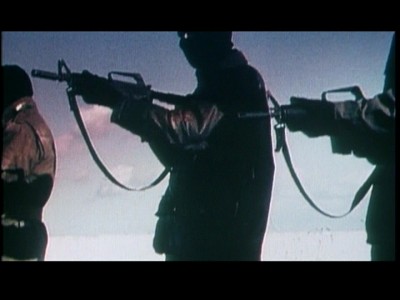
The aggravation is intentional; Jarman's style here is the visual analogue of the rapidly fired-off shards of electric guitar that came out of punk rock's one-chord wonders. This approach is nonstop, a hypersensory music-video visual and editing strategy, but used for a more thoughtful and well-integrated purpose: these are the contents, looking the way they actually appear in his mind's eye, running and overlapping and melding incongruously with each other at the very same speed they do in Jarman's end-of-his-rope vision as it responds, from the shellshocked sensibility of a gay leftist artist soon to die of AIDS, to a society, a culture, and a government that by most credible accounts was unparalleled in its indifference to art, its hostility to gays and any other disenfranchised/oppressed group, and its well-nigh-pathological contempt for the very idea of poverty, let alone the targeted poor themselves. (If you think you could bear even further dissonance than what Jarman dishes up, try making The Last of England a double feature with The Iron Lady; I dare you.)
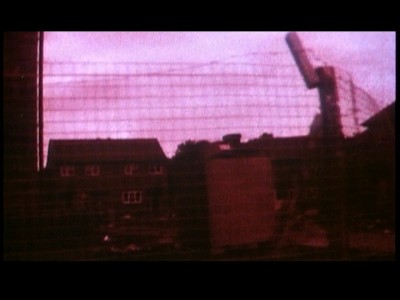
Then there's the sound (which shines even further as a principal element in its finally tip-top-shape sound on this Blu-ray edition). No person speaks on camera, but the sound effects -- a stomping boot, the sparking up of a torch, Swinton's frantic, claustrophobic struggle with that restraining wedding dress -- are ultra-heightened, sometimes more firmly present than the restlessly vibrating images themselves. In addition to Terry's bone-chilling intonations and a sobering section that offers static-y televangelists and shopping channel blather as the soundtrack to the writhing of a naked, freezing, starving man in a trash-littered gutter as a he gnaws on discarded bread, there is music galore, from Diamanda Galas's ragged, deeper-than-deep underground-opera ululations of desperate, elegiac passion to Marianne Faithfull in a singularly tender, hymn-like a cappella mode to everything from industrial disco to Spanish guitar to an alternately sweetly melodic and austere-modernist orchestral score, all courtesy a far-reaching soundtrack collaboration that also includes rock musicians like Barry Adamson, and Gang of Four's Andy Gill working in the context of credited composer Simon Fisher-Turner's overall sonic plan. It all makes for a soundscape that matches, note for image, the film's spiralling cavalcade of visuals in disorientation and evocativeness.
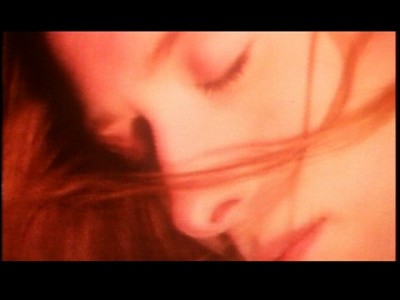
The Last of England is not a film to watch when you're in the mood for escapism or even for the intrigues and rewards of being told a story. It's a brazenly difficult, modernist, allusive work, intentionally nerve-wracking and disturbing and puzzling; it's certainly not a film I could watch in any serious way at any time, anywhere, no more than I would generally take The Waste Land along for light airplane reading. But it is a film anyone who appreciates seeing the limits of the medium as they're stretched into unusual, radical shapes will want to have on hand in their collection, for those viewing moments when a brave foray into the high, arid terrain of vigorous experimental challenge is the only thing that will quite do. It is an undeniably rich, dense, fully nourishing work of art full of so much peculiar, cacophonic, apoplectic vitality for which, though there's probably no being fully prepared (it's also the kind of film that demands eventual multiple viewings), you actually need to brace yourself before going in.
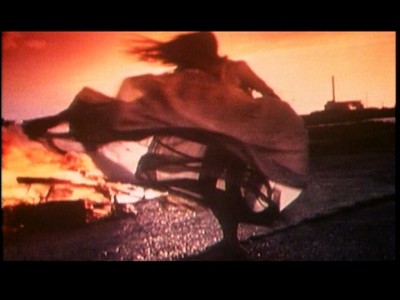
THE BLU-RAY DISC:
The transfer presented by Kino Classics, an AVC/MPEG-4, 1080p affair at the aspect ratio of 1.66:1, is very nicely done; the film (shot, I believe, on 16 and even 8 mm) is not "pristine" to begin with, but its every intentional bit of grain, flicker, and grime comes truly alive on your home screen the way it's presented here, with all the film's various monotones and colors bold and vivid and no aliasing or edge enhancement to be seen anywhere. It's a film with a special kind of celluloid roughness that's well retained here.
Sound:The DTS-HD Master Audio 2.0 stereo soundtrack presents the film's sonic dimension (always as carefully done in a Jarman film as the visual one) in two clear, rich, beautiful channels of sound that capture entirely every layer of Jarman's teeming (though dialogue-free) soundscape of narration, sound bites/effects, and music ranging from sweetest classical to dingiest industrial, all of which comes through full and bold and free of any distortion or imbalance.
Extras:None.
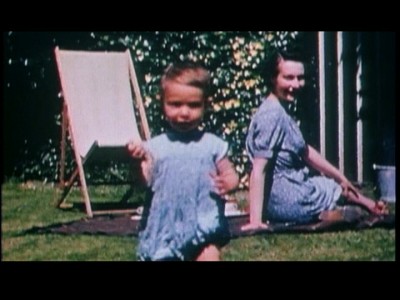
A non-narrative poem-film that is at once a searing act of protest and a delirious, sensual maelstrom, Derek Jarman's The Last of England is unique even among the late British avant-gardist's own hardly straightforward-storytelling body of work. It presents his nation (under seemingly neverending right-wing rule at the time the film was made), its past, its present, and its possible future as an entire cosmology on celluloid; if William Blake himself had been a filmmaker, it might have looked like this visionary nightmare, with its recurrent reiterations of and variations on the themes of (then) contemporary England as a desolate, chewed-up-and-spit-out privatized wasteland; its future as violent, oppressive fascism; and its postwar socialist past as tender home-movie heaven. It is in some ways a grueling experience, and also terrifying, but it's also an impressive and moving one; artists like Jarman (and, just from his own time/place, Peter Greenaway and Mike Leigh) frequently seem to bubble over most ferociously with acute creativity when the anti-art, anti-people political winds are blowing their strongest, and The Last of England, made at the height of a kind of anti-Thatcherite creative renaissance in the UK, is as galvanizing as it is galvanized. Highly Recommended.
|
| Popular Reviews |
| Sponsored Links |
|
|
| Sponsored Links |
|
|
| Release List | Reviews | Shop | Newsletter | Forum | DVD Giveaways | Blu-Ray | Advertise |
|
Copyright 2024 DVDTalk.com All Rights Reserved. Legal Info, Privacy Policy, Terms of Use,
Manage Preferences,
Your Privacy Choices | |||||||









